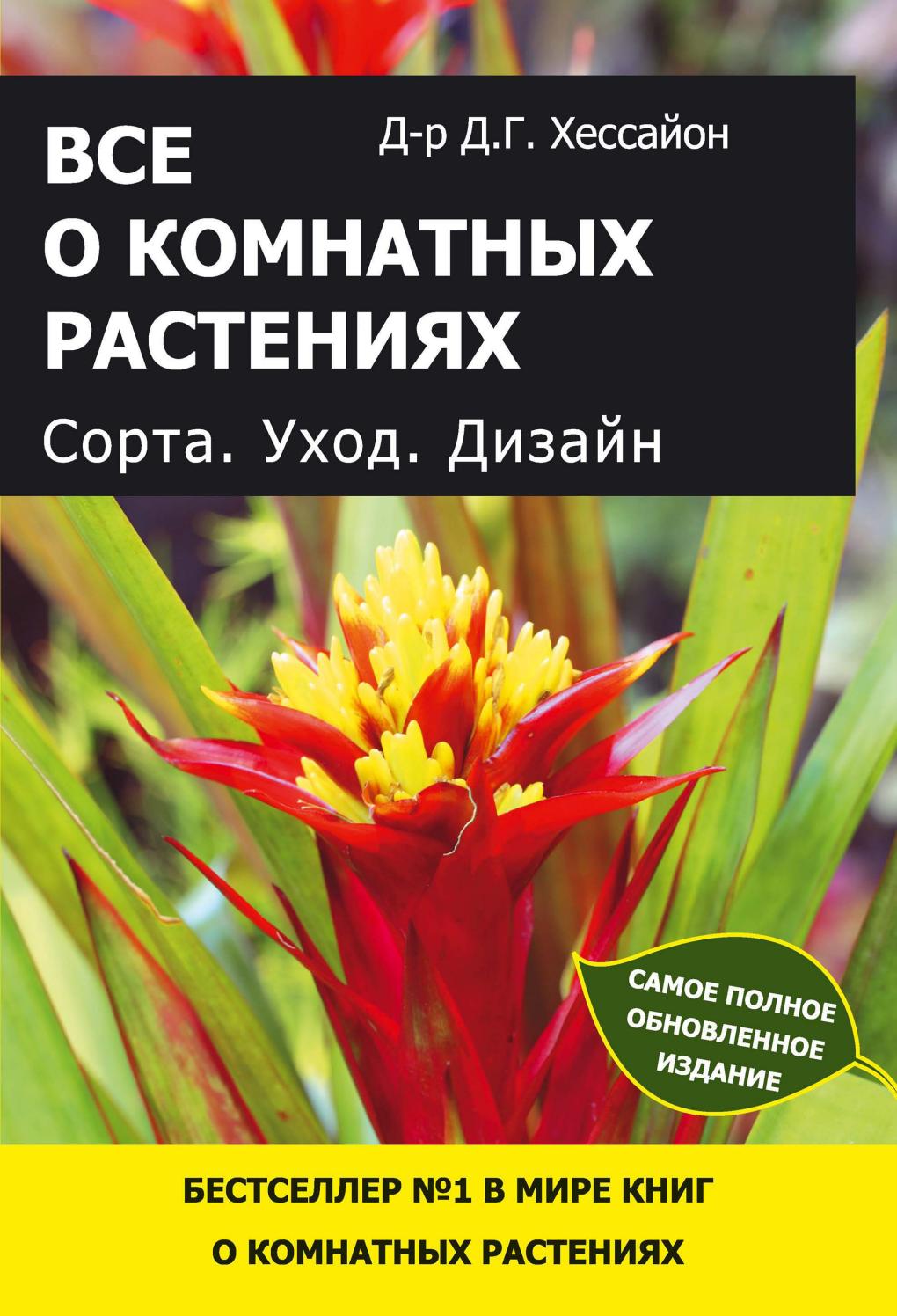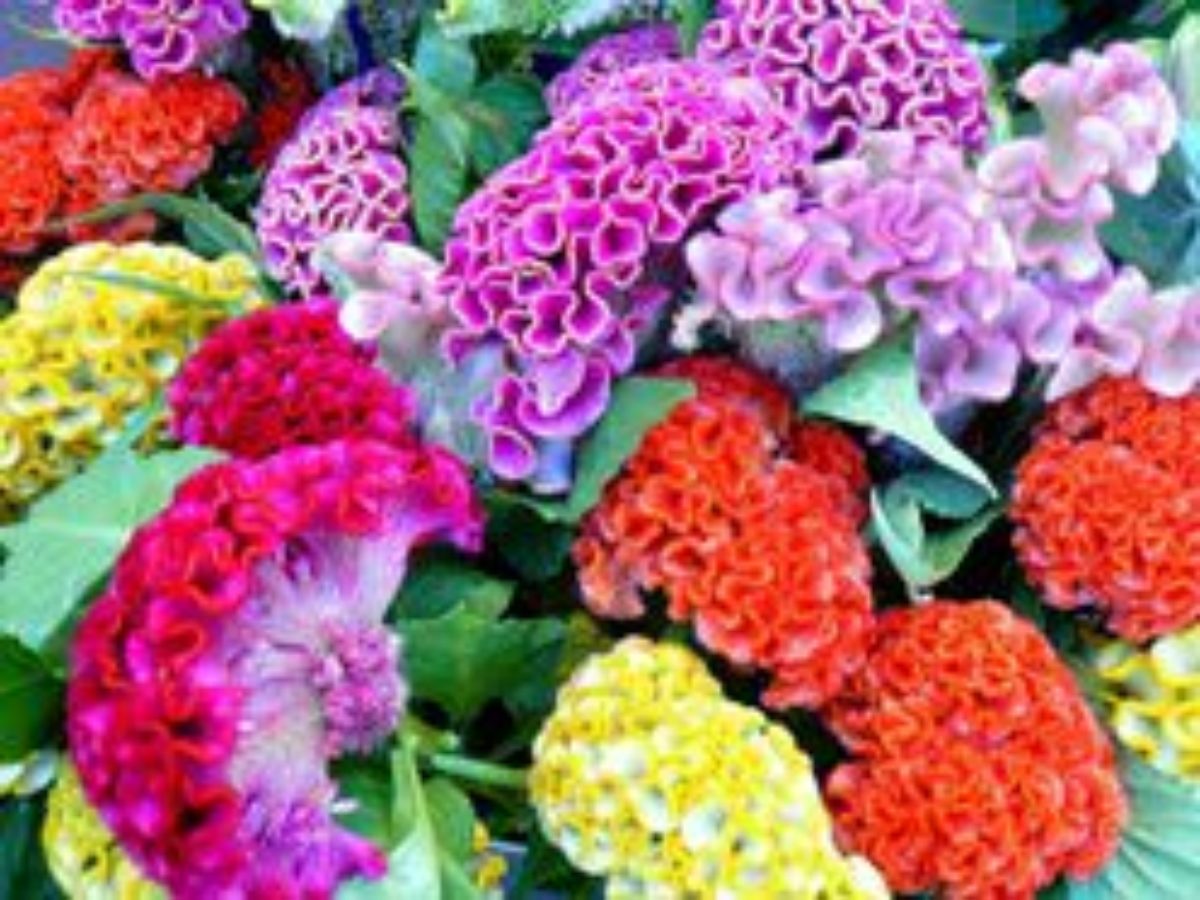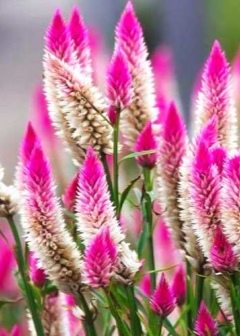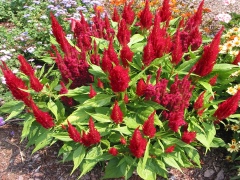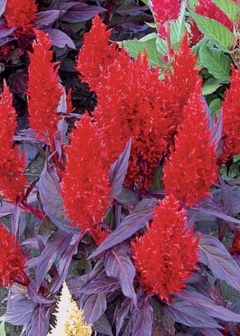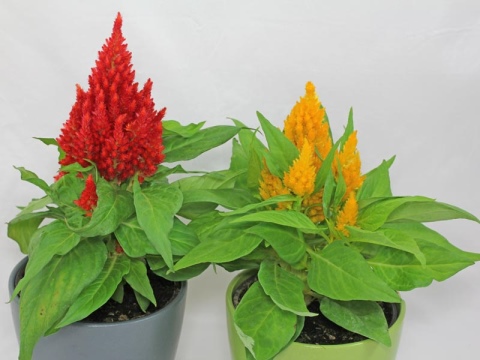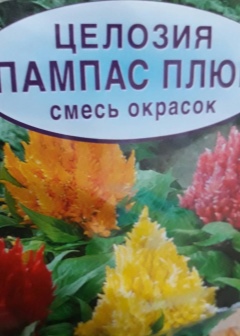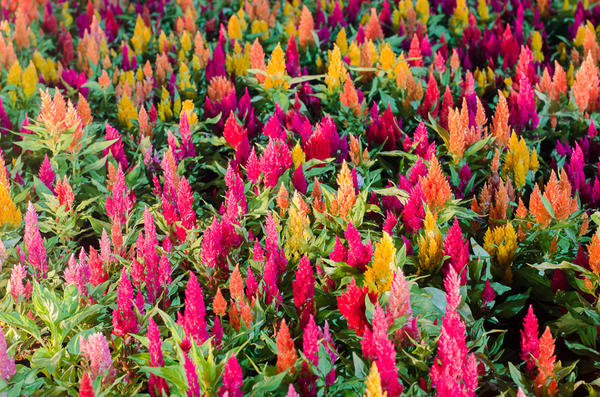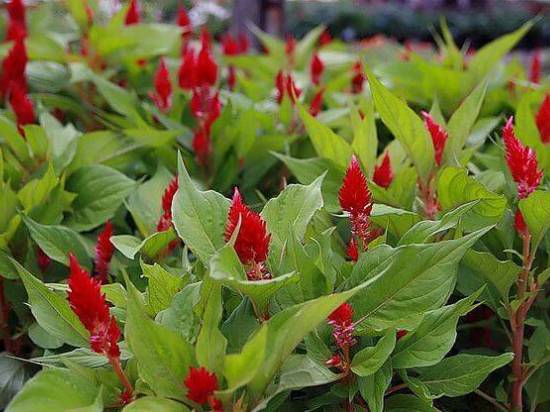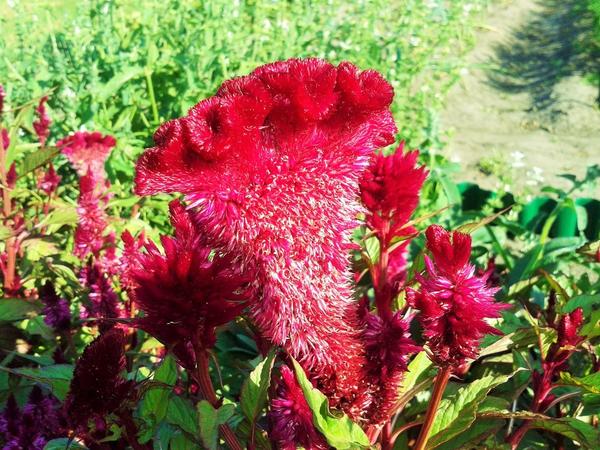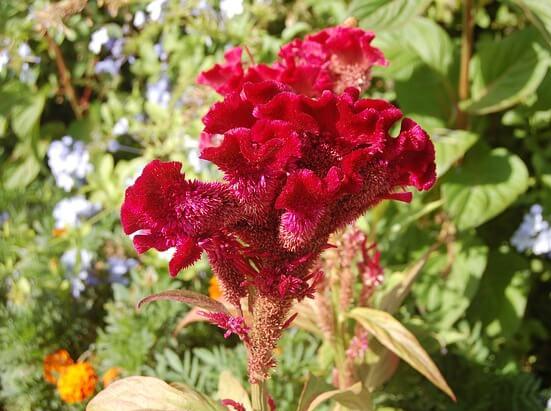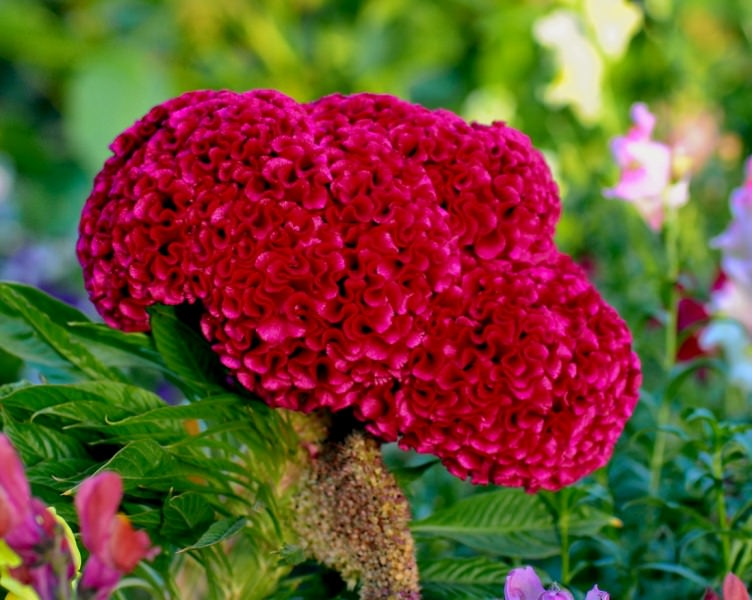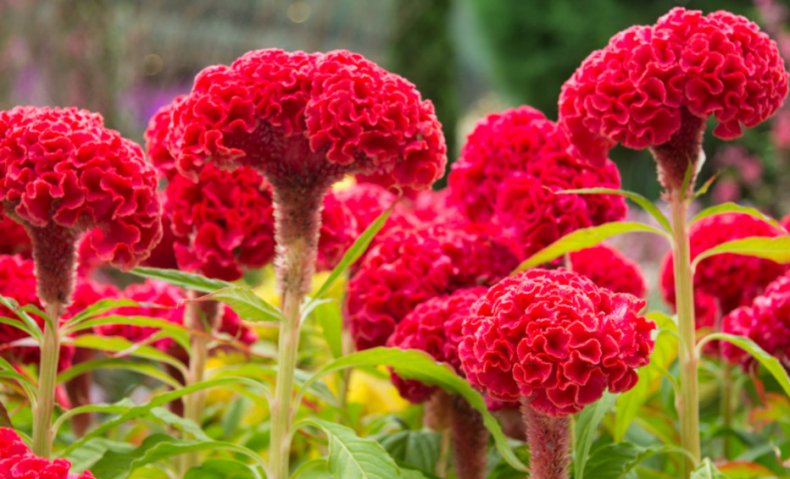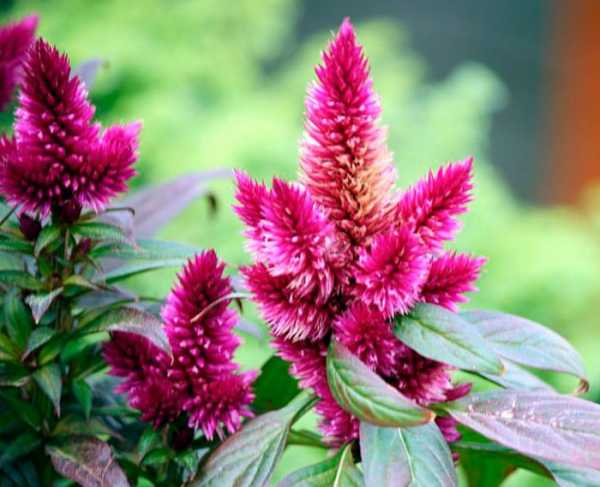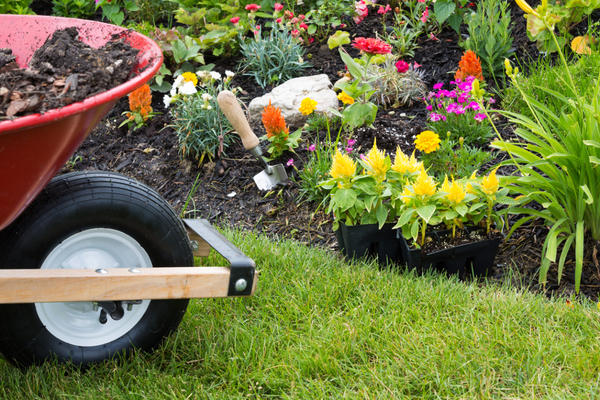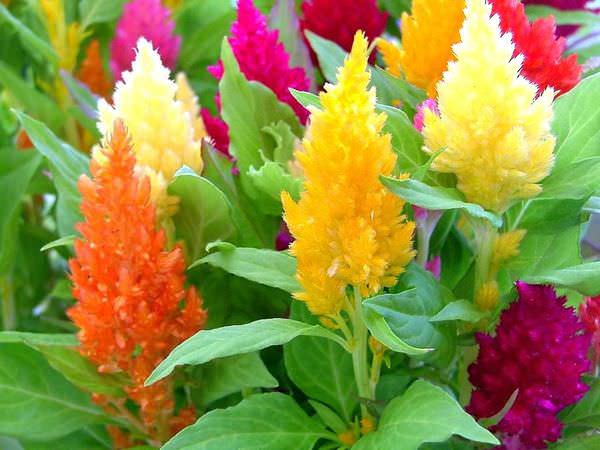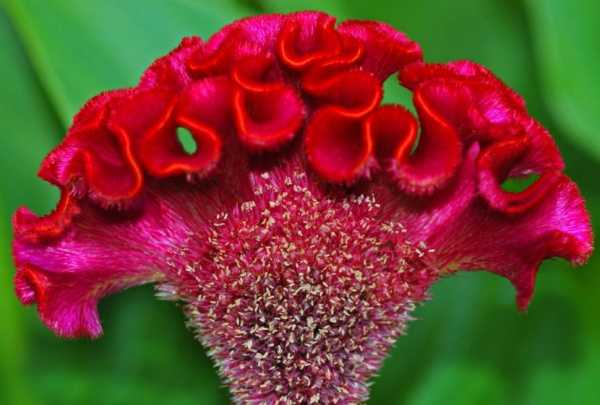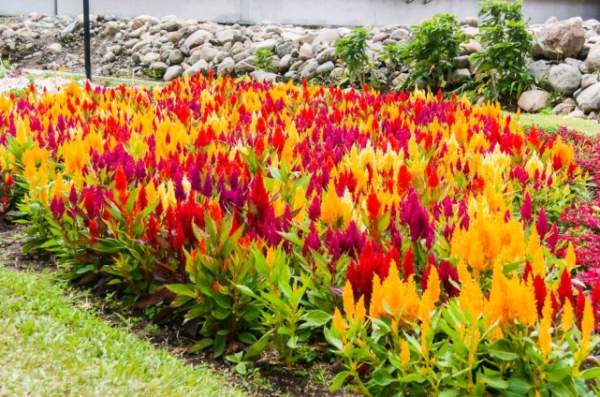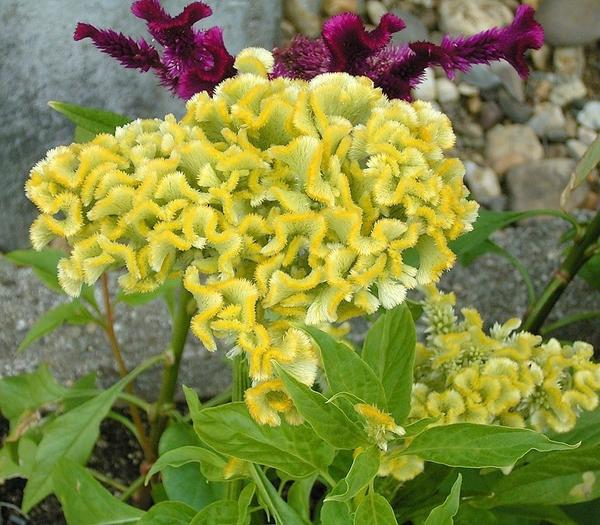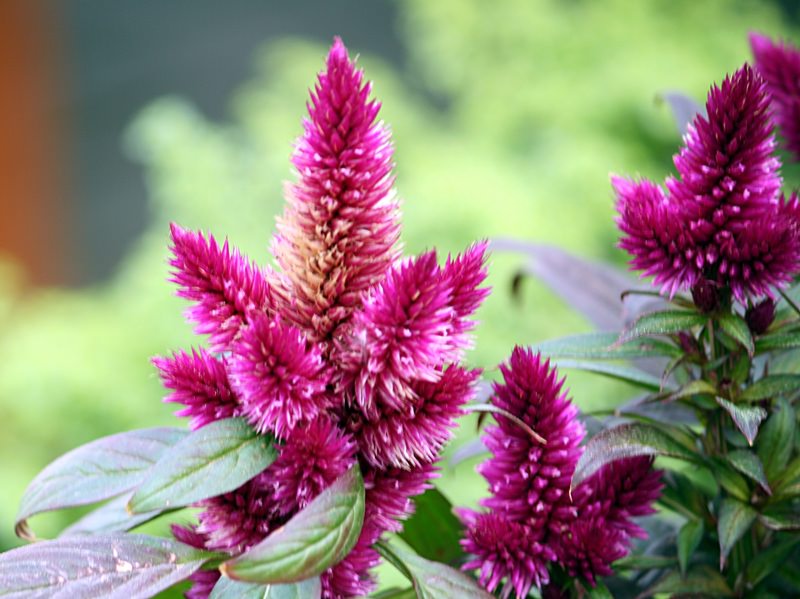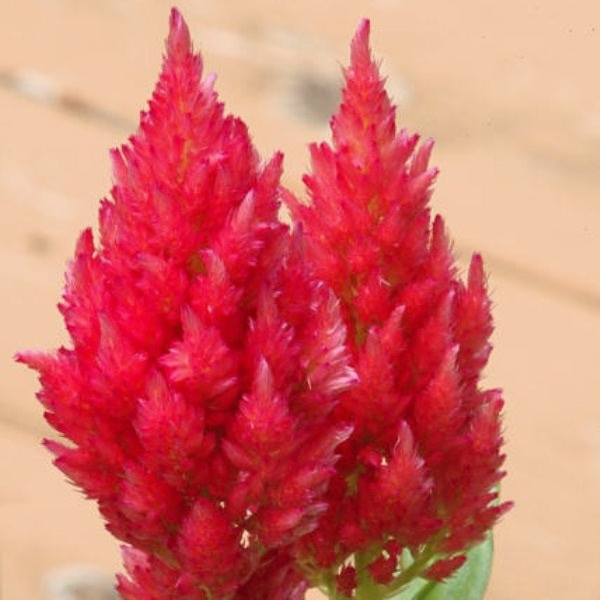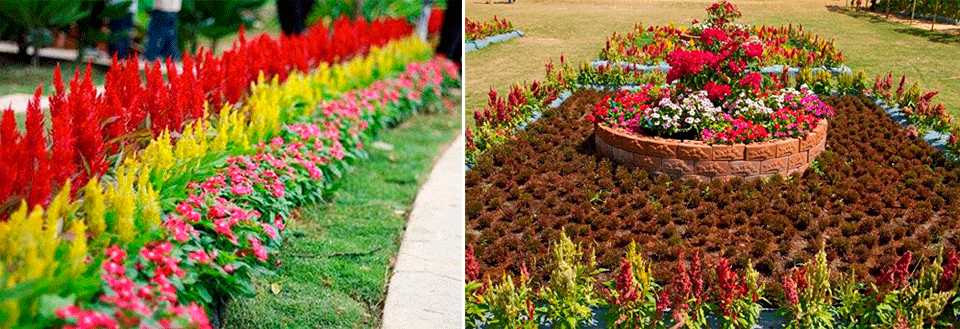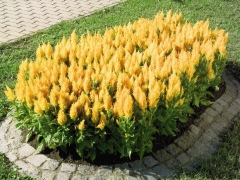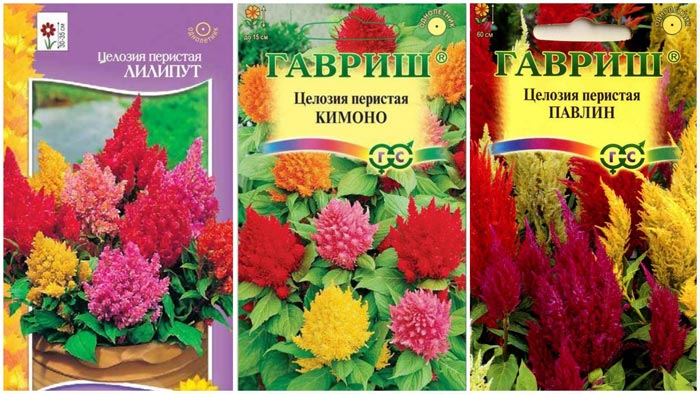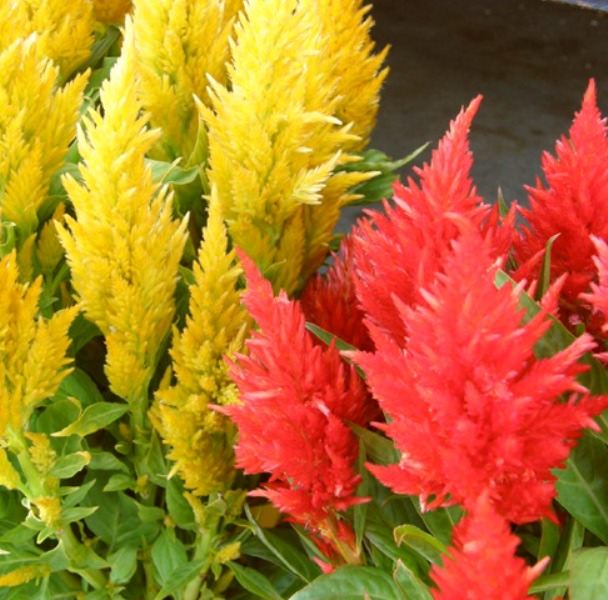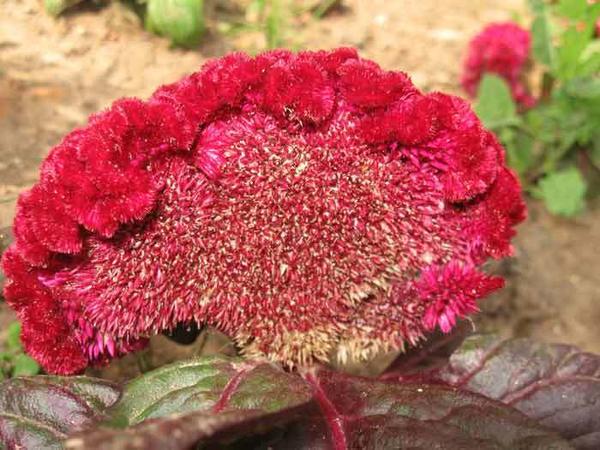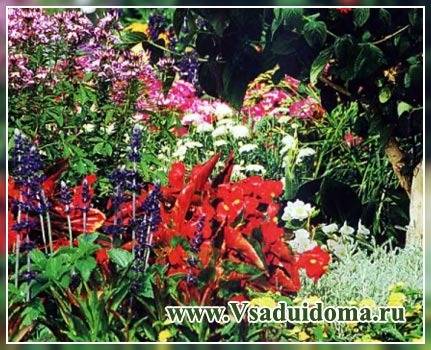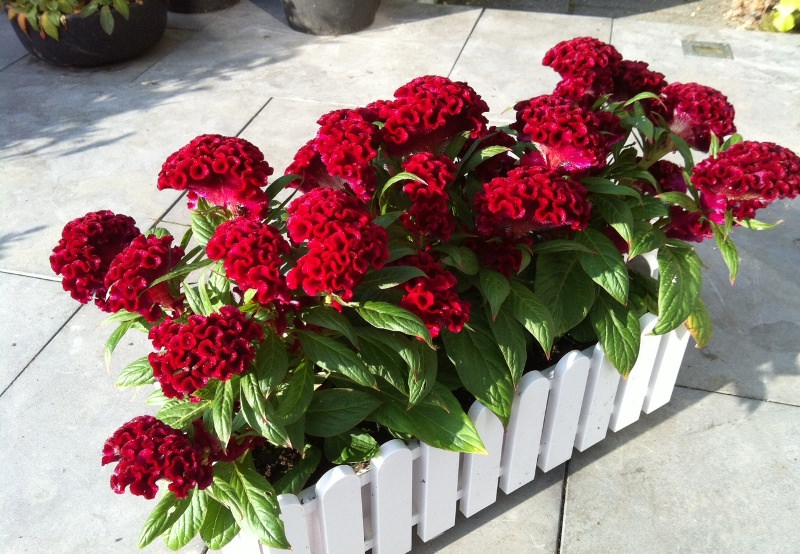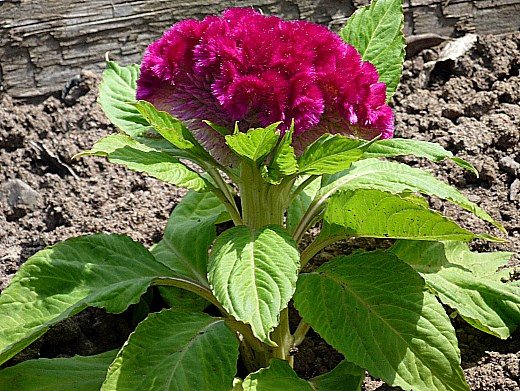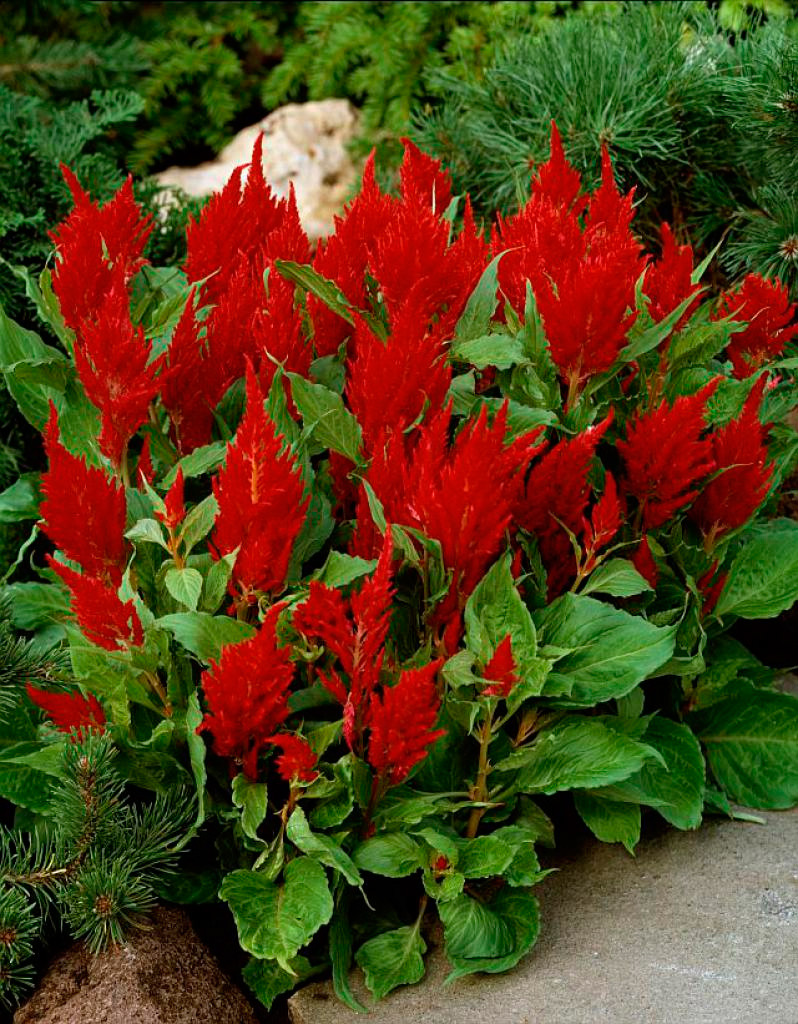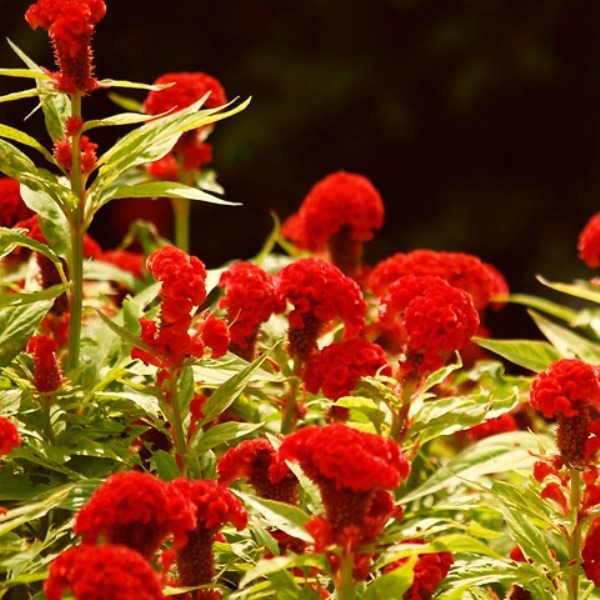Description and main characteristics
Celosia is a representative of the Amaranth family, although not so long ago such a plant belonged to people from the Marev family. From the Greek language, celosia is translated as "burning", "flaming", which very well describes the color of the flower buds and the shape that looks more like tongues of flame.
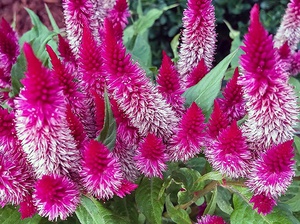
Such velvety, exotic, curly flowers and unusual bright foliage can fully decorate any flower bed on the territory of a summer cottage, and will also look good in a flowerpot, a separate container, pots, mixborder, in a dry bouquet.
Low flowers are used to decorate balconies, hanging pots, flower beds, carpet beds and boxes.
The stems of such a flower are branched, erect, the leaves are arranged alternately, linear-lanceolate, ovate-lanceolate, ovate. Small buds of the plant are collected in paniculate, spike-shaped or comb inflorescences of different colors - orange, red, yellow, pink, and also scarlet. The fruit looks like a capsule with a lot of seeds.
The plant does not tolerate exposure to cold temperatures. For this reason, in regions with cold winters, it is customary to grow such a flower as an annual, although perennial shrubs also exist.
Reproduction and cultivation
External exotic and unusual, even surprising how unpretentious these flowers are in terms of their cultivation.
You can propagate cellosia by seeds and cuttings.
But in the practice of cultivating a plant, the first method predominates, since it preserves the plant's selectivity better.
Technological features of flower cultivation:
- seeds are sown in moist soil not often, so that future seedlings are at a distance of five centimeters from each other;
- it is better to sow a seedling of cellosis first in each individual pot, so we avoid the danger of damaging the root system.
- in five days the first shoots will appear;
- the climatic temperature regime for seedlings should be 17-20 degrees Celsius, with good light and air circulation;
- you need to water, as they say, effectively, without overdrying the soil and not turning it into a swamp, since the roots of young plants will rot in excessively moist soil;
- sunlight is necessary, but it is not necessary for the direct hot rays to hit the seedlings.
As we mentioned, celosia is native to the tropics, so it does not need to be transplanted into open ground to establish warm weather.
Seedlings are planted as follows: if it is a dwarf variety, then 10-15 centimeters of distance are left between them, 20-30 centimeters between ordinary varieties.
In the garden, a sunny plot is well suited for cellosis and, if possible, protected from gusts of wind.
Soil requirements:
- the ideal option is not dense and weakly acidic in chemical composition, desired good drainage;
- monthly application of fertilizers (mineral) will have a good effect on the splendor of flowers;
- in case of heat, good watering of flowers is required, otherwise they wither and no longer bloom.
Celosia decoration of the suburban area
This plant is unusually both in the shape of the flower and its surprisingly bright colors: yellow, orange, scarlet, purple-red, or bright pink. No flower can boast such a bright velvety outfit. It is not surprising that flower beds with this fashionista attract the admiring glances of passers-by like a magnet.
 celosia beauty
celosia beauty
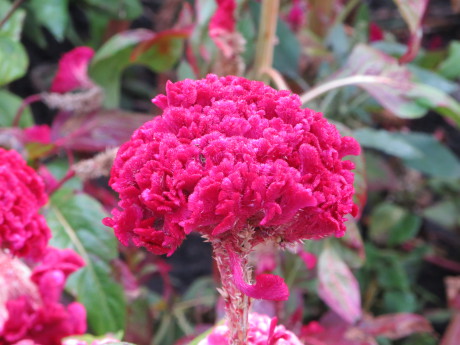 celosia fashionista
celosia fashionista
That's all the secrets of floriculture for growing these flowers. Why is growing celosia such a favorite pastime for gardeners and florists? Celosia is also appreciated for its long flowering from July to the last days of October. Caring for flowers is not difficult, and the beauty is indescribable!
Even after flowering, it still remains decorative. Its stems can shine in different colors: red, burgundy, purple, bright green, bronze and even gold.
Turkish carnations will also be extraordinarily beautiful in the design of your site!
I also recommend looking at:
Celosia - planting and care
If you want to decorate your flower bed with an incredibly spectacular and vibrant plant, which will certainly become the prima of any flower garden, celosia is exactly what you need.
Growing cellosis from seeds
Celosia propagates both by seeds and cuttings, but the first method is preferable, because when multiplied by the second method, the flower often loses its decorative qualities, because of which, in fact, this plant is grown.
 When to plant seedlings. Before sowing, the seed material needs preliminary preparation: in order for the dense shell of the seeds to become soaked as soon as possible, they must be kept in a solution of zircon and epin (1 drop / st. Water) for 3-4 hours. The optimal time for planting is March - early April.
When to plant seedlings. Before sowing, the seed material needs preliminary preparation: in order for the dense shell of the seeds to become soaked as soon as possible, they must be kept in a solution of zircon and epin (1 drop / st. Water) for 3-4 hours. The optimal time for planting is March - early April.
Seeds must be sown at a distance of 3 cm apart... Since the seeds are very small (in 1 g. - about 800 pieces), they do not need to be planted in the ground. The planting material scattered over the surface of the wet soil is covered with a film and placed on the windowsill at a temperature of 23-25 C.
So that your efforts are not in vain, you must strictly follow the rules for caring for seedlings, in particular, to ensure that they are protected from direct sunlight. An ordinary newspaper is suitable for this.
The film can be removed one week after germination.
Growing seedlings of cellosis. Since the daylight hours are still too short at this time of the year, additional illumination should be provided for seedlings for 4-6 hours. Group sowing of seeds involves double picking of seedlings:
- After the appearance of 2-3 true leaves, the seedlings are planted at a distance of 5 cm from each other to a depth of 4-5 cm, the composition of the soil is the same. When the transplanted seedlings take root in a new place, they must be fed with a complex mineral fertilizer for flowering plants, while the solution must be weakly concentrated. It is better to do this at the same time as watering.
- After the seedlings get stronger, a second pick is carried out into a deeper container with a peat-humus substrate. It is better to use individual pots, this will help in the future to painlessly transplant the cellosis without damaging the root system. As soon as the plant takes root, you can repeat the feeding.
Celosi planting
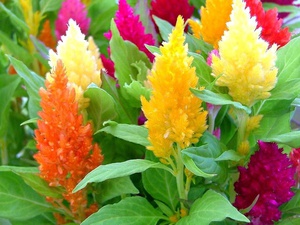 When choosing a place for landing, it should be borne in mind that celosia prefers the most protected from the wind and sunny areas with slightly acidic, loose soil. If the soil in your garden is heavy, a small amount of sand should be added to make it friable. Regardless of the composition of the soil, it is recommended to add a little humus before planting cellosia.
When choosing a place for landing, it should be borne in mind that celosia prefers the most protected from the wind and sunny areas with slightly acidic, loose soil. If the soil in your garden is heavy, a small amount of sand should be added to make it friable. Regardless of the composition of the soil, it is recommended to add a little humus before planting cellosia.
Do not add fresh organic matter - cellosis does not tolerate it.
Remember! Even small frosts are destructive for young plants! Therefore, it is possible to plant seedlings in the ground only after the final onset of heat (early June).
How to plant celosia. Plants are planted in a traditional way for all horticultural crops
Young plants are still very fragile, so you need to transplant them carefully. It is better to use the transshipment method so as not to damage the root system
If you sowed or dived seedlings of cellosi into peat-humus pots, plant the plant in the ground right with them.
It should only be borne in mind that the distance between seedlings of tall species is 25-30 cm, dwarf ones - 15-20 cm.
Growing and caring for a plant
After planting in open ground, the flower needs certain care - watering and feeding. Since the seedlings of celosia do not tolerate drying out of the soil, it is necessary to constantly keep the soil moist.Watering is necessary exclusively in the morning and quite often. But (!) Do not allow excessive soil moisture, as this can lead to root rot.
For feeding, complex mineral fertilizers are used, which should be applied every 3 weeks (for 5 liters of water - 15 grams of fertilizer). Do not overdo it with nitrogen, otherwise you will get wild foliage, but you will not see flowering.
Celosia is very difficult to tolerate a lack of moisture and stops the formation of peduncles. On hot days, the plant must be watered abundantly.
Finally, remember to remove weeds and loosen the soil in time. That is, in principle, all the wisdom of caring for the whole.
Growing
- The plant is quite capricious. Its main drawback is its absolute inability to cope with the cold. The ambient temperature, which has dropped to five degrees Celsius, is already lethal for the whole body. The rest of the climatic conditions of the middle zone of our country are suitable for the successful cultivation of this beautiful flower.
- The illumination of the place for the cultivation, intended for cultivation, needs high. The plant tolerates sunlight well and does not like shade at all.
- It is necessary to water the bush during dry and hot weather. Then it should be done every two days. On other days, the plant should be watered when the soil under the plant is one centimeter deep. But stagnation of moisture in the soil is unacceptable, since the roots can rot or get sick.
- Top dressing is needed periodically, with a frequency of once every thirty days. A complex mineral fertilizer with a minimum nitrogen content is used. If you do not follow this rule, the development of cellosia will be directed towards the foliage, and flowering may stop.
- Loosening and weeding of the land under the bushes is also periodically necessary.
- Plants with tall shoots should be supported against strong winds that could break the stem.
- Celosia does not hibernate in the open field, so it is advisable to grow it in portable containers that can be brought to a place with a positive temperature for this period.
- The soil needs neutral acidity, loose and fertile. Acidic soil is improved by introducing lime materials there, for example, ground shell rock. Dense and clayey soil is improved by adding sand and drainage material such as rubble or pebbles. It is unacceptable to fertilize the site with unstable organic matter.
- For cellosis when planting seedlings, a soil mixture is required, the components of which will be humus leaf soil and vermiculite.
Propagation of cellosis
In the vast majority of cases, the only method of plant propagation is sowing seeds for growing seedlings.
You can get the seeds yourself.
To do this, collect the inflorescences that begin to wither, dry in a dark place and then simply shake out the seeds.
After that, they remove the debris, which is lighter than the seeds and can be simply blown off, and the seeds are stored in a dry, dark and warm place.
Seedling
Sowing seeds to get seedlings from them is carried out in the period from the last days of March to the beginning of April. Before planting, the seeds are processed by soaking their hard and dense seed coat.
To achieve the best result, Epin and Zircon preparations are added to the water. The seeds are kept in this solution for about four hours. Then they are immediately placed in the ground, evenly placed in a container filled with soil mixture.
You do not need to fill them up, you just need to press down slightly. After that, the plantings are sprayed with water and, covered with a transparent material, are placed in a room with good sunlight.
Conditions for growing seedlings:
- The temperature in the room must be provided in the region of twenty-three to twenty-five degrees Celsius. Periodically, the cover is removed from the box for ventilation and condensation removal.
- Also, the container must be additionally artificially illuminated after the end of daylight hours for another four hours.
- After the first leaves appear on the sprouts, they are moved to a new box, placed at a distance of five centimeters from one another.
- After three days, the first feeding is done. Mineral fertilizer for flowers is used for her. The fertilizer dissolves in the water that the seedlings are watered with.
- When the sprouts strengthen the root system, they are transplanted into separate peat pots, carefully removing them from the box along with the earthen lump.
- When the seedlings have hardened in the pots, after four days, they are fed a second time using the same fertilizer and the same method.
Landing in open ground
The seedlings are placed in open ground after a stable warm air temperature is established and the ground warms up well enough.
In the climate of the central part of our country, this usually occurs at the end of May. Pits are made in the garden so deep that the peat pot fits completely there.
The distance between shoots should be thirty centimeters for varieties with tall bushes and twenty centimeters for varieties with low bushes. After that, the plant is taken care of as usual.
Diseases and pests:
- Due to stagnant moisture, the black leg can damage the cellosis. A sign of the disease is the appearance of a black spot at the bottom of the stem. Loosening of the soil and placing wood ash on top will help. Watering should be stopped.
- They get rid of aphids by spraying the bush with a special solution.
- Other diseases do not harm the plant.
2> DIY landscape design: everything about celusion in composition with other colors
The reviews about celosi are just great. The unpretentiousness of the flower and its beauty make it a welcome guest of any flower bed. This plant is loved by both summer residents and professional landscape designers.

Using a flower in a composition
Tall plants decorate flower beds, gazebos, and undersized plants decorate balcony boxes, pots, hanging compositions. Remember that celosia is dead wood, which becomes the main note of many winter bouquets. To do this, the celosia is cut off, dried in a dark place (the flowers fade from the light), and then they decorate the house with them, for example.
Usually cellosia is planted as a separate plant, so it is individual and bright. To plant it in a flower arrangement, follow these rules:
-
Scallop celosia will be balanced by calm shrubs, perennials and even decorative stones.
- The yellow color of celosia goes well with ageratum, which has a blue-white color. Celosia with red flowers is a great companion for white lobelia.
- Spike-like varieties of celosia are often combined with cereals. It sounds strange, but it looks great and allows you to create eco-style in the garden.
Diseases of the garden flower celosia when growing
With proper care, a celosia garden flower is rarely affected by diseases and pests. Over-watering when growing a celosia flower often develops a fungal infection (black leg), which leads to the death of the plant. In this case, it is necessary not only to destroy the diseased plant, but also to disinfect the soil. To prevent this disease of cellosis, the seeds should be disinfected with a solution of potassium permanganate before planting.
Of the pests for celusion, aphids are dangerous.
Active ingredients. The seeds contain 13-15% proteins, 30.8% starch, 9-11% fats, 14 microns / g of nicotinic acid, potassium nitrate. The leaves contain up to 29% proteins, 4.3% fats, as well as calcium, iron and phosphorus. Inflorescences contain amarantine (most of all in red-flowered forms, in yellow ones - trace amounts), pinite, potassium nitrate.
Application in medicine. The inflorescences are used as a hemostatic, wound healing and anti-inflammatory agent. Preparations from inflorescences and leaves (infusions, decoctions) are taken for uterine, hemorrhoidal, pulmonary bleeding, dysentery, diarrhea, leukorrhea and amenorrhea.
The seeds are used for redness of the eyes, dizziness caused by intense heat, and inflammation of the liver, for nosebleeds, hemoptysis, profuse uterine and hemorrhoidal bleeding. They are also used for leucorrhoea, blurry (blurred vision), painful leucorrhoea, chronic dysentery, persistent diarrhea, painful urination, cough, ophthalmia, helminthiasis. Seed compresses are applied to areas of the body with bone fractures, and leaf compresses are applied to ulcers, tumors, abscesses, and inflamed skin areas.
Description
Scientists attribute this plant to the genus celosia (Celosia), amaranth family. Celosia is a Latin word that appears to be derived from the Greek Kelos, meaning fiery or burning. I immediately understood the name of the plant at the first glance at the bright, rich color palette of flowers.
In the modern world, there are about 60 species of these herbaceous plants, the natural habitat of which is the tropics. Growth geography: Asia, Africa, South America.
By shape, the flowers are classified into the following types: Spikelet, Cirrus, Comb.
Celosia comb and Celosia pinnate are unconditional leaders in people in popularity for their breeding (cultivation). The first of them will be discussed further.
Its full name is Celosia argentea f. Cristata, that is, silver comb cellosia. Or, as the people also call it: cockscomb, since the flowers are outwardly similar to it.
It is a perennial plant, although it is cultivated as an annual for practical reasons.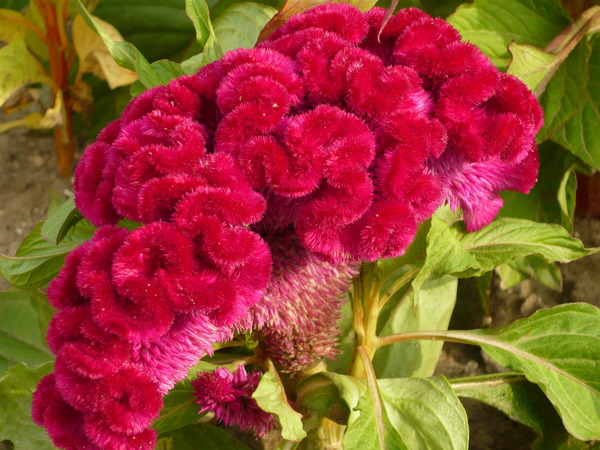
The height of celosia in nature usually does not exceed 45 centimeters, for gardeners, handsome bushes are more compact, from 20 to 35 centimeters. The appearance of comb celosia is exactly this: small flowers are buds of inflorescences, the upper edge of which is sinuous, causing associations with the comb of a rooster.
Celosia is characterized by a bright color: blood red, orange, yellow, pink and their shades.
A rare combination of brightness and a specific form of flowers distinguish the crested cetus from other representatives of the terrestrial flora.
Features of silvery pinnate, or paniculate cellosis
Despite the abundance of flower species, only 3 representatives of the genus are most in demand among gardeners. This is a spikelet, comb and pinnate cellosia, also called paniculate. The latter type comes from silvery celosia, the peduncles of which grow in the form of ridges or form a panicle. In the post-Soviet space, paniculata celosia is the most popular.

The clever arrangement of the well-groomed celosia will give a luxurious look to any garden
What family does it belong to
Celosia is part of the Amaranth family, although not so long ago it was periodically referred to as the Marevs. According to the information base The Plant List for 2013, the genus Celosia includes 51 species of herbaceous and bush type plants, among which there are both annual and perennial varieties.
Briefly about the history of appearance
This flower came to Europe from Africa, reaching its greatest distribution in European gardens during the Renaissance. Sprouts and young foliage of plants of the genus Celosia, and especially Celosia silvery, have been eaten since ancient times in the territories of India, South America, Indonesia and Africa.
Additional Information! Celosium flower seeds were used for oil extraction.
Also, the plant is used as a remedy for blood diseases, blurred vision, worms and ulcers in the oral cavity.
Plant characteristic
Celosia pinnate is an ornamental plant with small flowers growing in panicle-shaped inflorescences. In the wild, the paniculata celosia reaches no more than a meter in height, while the bushes bred in captivity are much lower. The stems of the plant have a bright green color, some varieties stand out with red veins on them. This species is characterized by pointed leaves with a smooth surface.The varieties of brightly blooming celosia, also spelled cellosia, have different colors:
- yellow;
- Red;
- purple;
- crimson;
- Orange;
- pink;
- pale tones of the above colors.
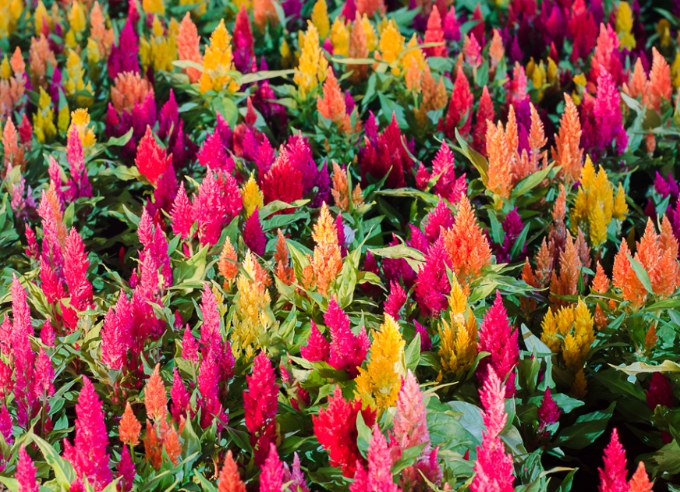
Celosia has a wide range of colors
Celosi planting technology
Young plants of this species are planted in the usual way for all flowers. When planting, you should carefully handle the seedlings - they are very delicate and fragile, so they can easily damage the root system or stems. For this, the seedlings are planted in open ground using the transshipment method. But it is better to dive the seedlings into peat cups, in this case, the plants are planted in the soil with them.
Seat selection and preparation
When choosing a place where these bright flowers will grow, you need to know:
- plants cannot stand strong drafts and gusts of cold wind;
- the site should be illuminated by sunlight during the day;
- the soil in the flowerbed should be slightly acidic or neutral, rather loose.
If the soil in the garden is too heavy, then before planting the flowers, a sufficient amount of river sand is introduced into it to make it looser. Regardless of how fertile the soil is, humus must be introduced into it before planting seedlings at the rate of 10 kg per 1 m2. The land plot for planting these flowers is prepared in advance, 25 - 30 days before planting. However, it is best to prepare your flower bed for planting flowers at the end of the previous season.
Heat-loving seedlings do not tolerate even minor fluctuations in air temperature, therefore, the time of their planting in open ground is the first days of June, when the heat was finally established.
Growing cellosis from seeds
Celosia varieties can be propagated by seed or cuttings. But it is believed that when propagated by the second method, plants most often lose their decorative effect. Therefore, flower growers grow seedlings from seed at home, which are planted in a specially prepared place with the onset of heat. The seeds can be bought at a specialty store or collected by yourself from the flowers in the previous season.
The distance between the seeds during sowing should be 2 - 3 cm. However, the sowing material of these plants is small, they are not buried in the ground, but simply scattered over the soil, which is pre-moistened. The containers with the planted seeds are covered with polyethylene and placed in the light. The air temperature in the room should be maintained at about 22 - 24 ° C.
The emerging seedlings should not be exposed to direct rays of the sun, it is better if it is diffused light. It is enough to hang tulle on the window to protect young plants. Polyethylene is harvested 5 to 7 days after the seedlings appear. Daylight hours during the cultivation of seedlings are not yet too long, so the seedlings need additional lighting in the evening and morning hours (4 - 5 hours a day).
The emerging seedlings should not be exposed to direct rays of the sun.
Picking and planting seedlings in open ground
When planting seedlings at a close distance, there is a need for its picking. This kind of flowers must be dived twice:
- When the seedlings have a pair of true leaves, they are seated at a distance of at least 5 - 6 cm from each other, the nutrient mixture for their transplant should be the same. Seedlings in a new place take root quickly enough, and then it's time to add fertilizer to the soil from a complex mineral fertilizer (for flowers). Such feeding should not be highly concentrated. This procedure is carried out in parallel with watering the seedlings.
- After complete engraftment of the dived seedlings, it can be transplanted again. For transplanting, peat cups should be used, in each of which one seedling is planted. When the seedlings re-take root, they can be re-fed.
Be sure to lay a layer of drainage material (at least 5 cm in height) at the bottom of the planting holes.Lime should be added to the soil with low acidity before planting flowers there. After planting, the seedlings must be watered, loosened the soil and add mulch with a height of 7 - 10 cm. You can take sawdust, peat as mulch, and if these materials are not available, then you can use cut grass.
During the season, celosia is fed every 25 - 30 days.
Overview of species and varieties, their shades
In total, there are several types of celosia grown as a cultivated garden plant. All of them are highly adaptable, most often grown as annuals with planting from the seeds of plants of the previous year. In the southern regions, it is possible to plant shrub forms, but at the very first frost, the plant risks dying. That is why herbaceous cellosis are most often found in the Russian climate.
Spikelet (spike-shaped) or Hutton's celosia
Not the most popular among gardeners - the only exception is the Flamingo variety. Nevertheless, the spike-shaped form has its obvious advantages. For example, the height of the stems - it reaches 100-130 cm, which makes this species suitable for making bouquets and various decorative dry compositions. Hutton's celosia is highly branched, has an elongated pinnate leaf shape, is resistant to cold and drought.
Spike-shaped celosia do not differ in such a bright decorative effect, but they are also very good both in bouquets and in a cut for subsequent drying. One of the most famous varieties is Flamingo Feathers, with a pale pink inflorescence base and a bright tip. The height of the stems exceeds 1 m.

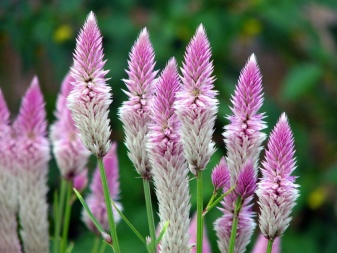
Silvery
The most common cultivated form of celosia. The silvery form is distinguished by fleshy oval leaves with a pronounced metallic sheen - it can also be copper, bronze or golden. All its varieties are usually subdivided into 2 categories.
Plumosa. A form whose inflorescences resemble plumes on military headdresses. Lush panicles are grown for cutting and have fairly long stems.
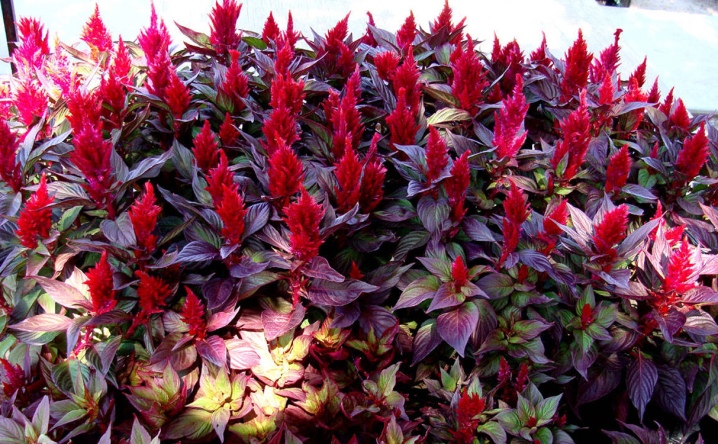

Comb
This form of celosium is found in the form of a dwarf or undersized variety - the height of an adult flower does not exceed 65 cm. The sinuous comb edge of the fused inflorescence gives the plant a special decorative effect. The popular name "cock's comb" is especially common in relation to brightly colored varieties. The color scheme ranges from yellow and orange to pink, scarlet and crimson.
Among the popular varieties of celosia cristata are the following.
Atropurpurea. The variety is distinguished by a magnificent combination of light green-green juicy foliage, pink stem and veins. Inflorescences are purple-red, luxuriously colored, abundantly pubescent.
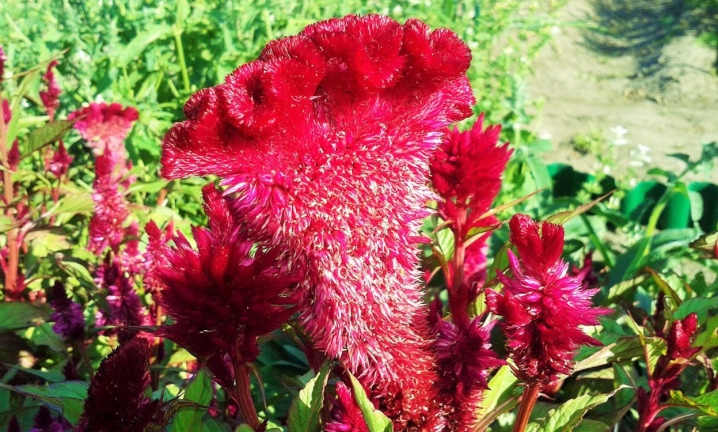

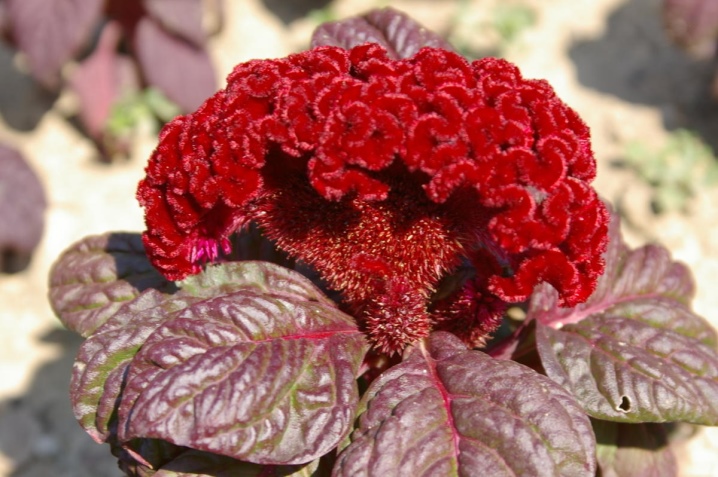


Paniculate and feathery
Celosia plumosa also pleases with a variety of colors. There are several of its most popular varieties.
"Pampas". Medium in height, the length of the stems reaches 70 cm... Differs in long flowering and a variety of colors. Paniculate inflorescences have all shades of autumn - from yellow and orange to red and crimson.
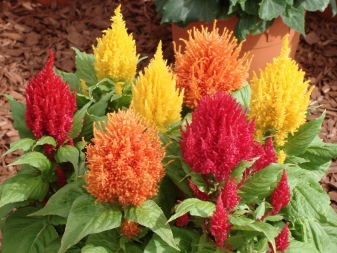
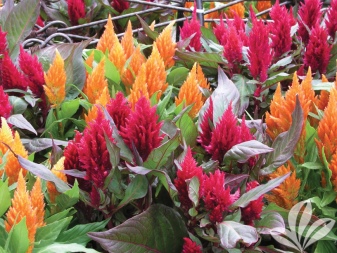
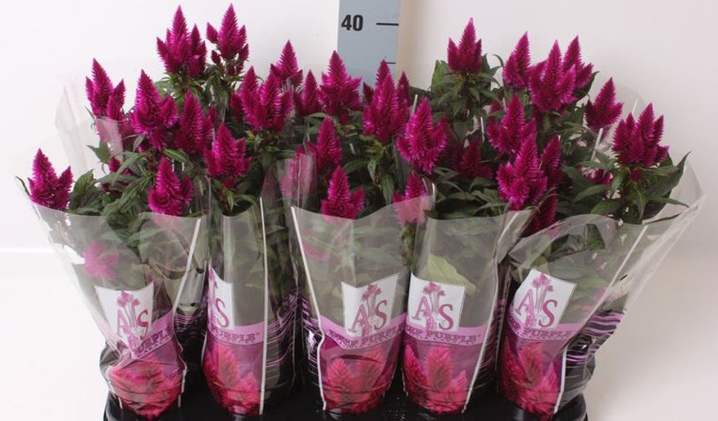

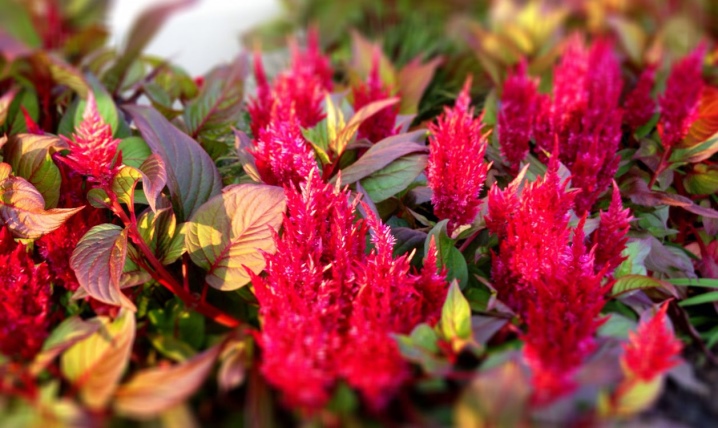
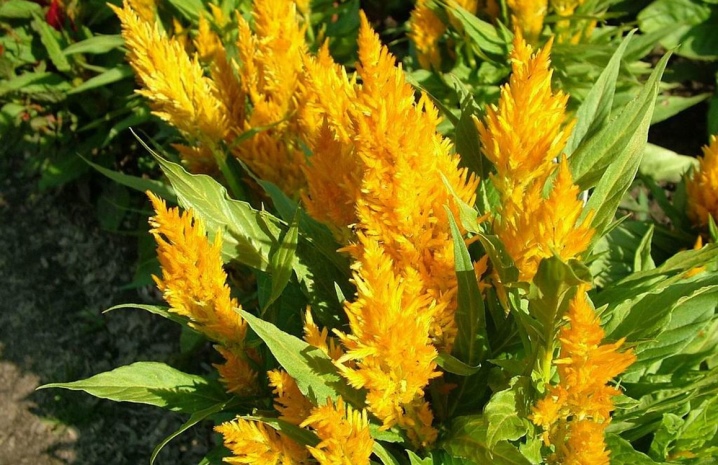


This list of varieties of paniculata is not exhausted. To choose a real decoration for your garden among them will not be difficult for both amateurs and professionals in the field of landscape design.
Features and description of cellosis
Celosia is a herbaceous plant that can be annual and perennial. The foliage of the culture has noticeable streaks. It can be heart-shaped or lanceolate. Some varieties are characterized by a burgundy border along the edge of the sheet. However, the highlight of celosia is not the leaves at all, but the flowers. More precisely, the shape of the inflorescences, which happens:
- spikelet;
- comb;
- feathery.
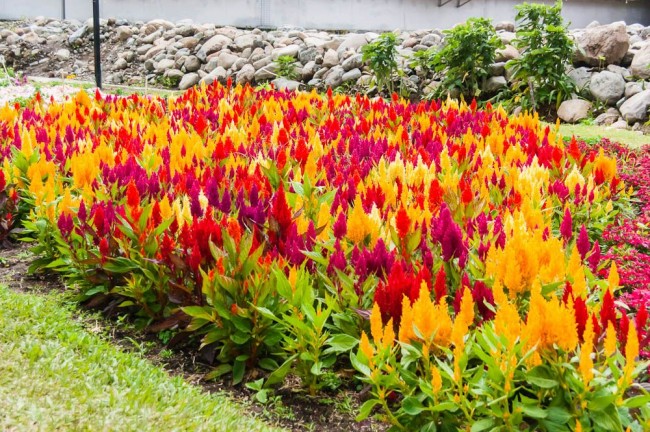 Celosia is like a flame of fire
Celosia is like a flame of fire
V the height of the culture can reach from 30 cm to 1.5 m. On the territory of Russia, the plant is cultivated mainly as an annual. After all, not every flower can survive the harsh Russian winters.The stems of the culture are quite thick and strong. They hold well upright and have a slightly ribbed texture. In most cases, the stems are green, but in some varieties they may have a reddish tint. The flowers are small, but gathered in an inflorescence, they take on a spectacular appearance.
Celosia is also used in traditional medicine. Funds based cultures treat inflammatory diseases, increase the body's immune forces. Culture oil is used for the production of some cosmetics.
Views. Inflorescence structure and shades
According to the shape of the inflorescences, these plants are divided into three types that almost all growers prefer to grow:
comb;
paniculate;
spikelets;
Each type of amaranth is exotic in its own way, beautiful, has its own advantages.
Celosia comb
got this name, thanks to a kind of flat inflorescence, similar to a cock's comb. Flowers in large comb inflorescences, have bright shades of pink, burgundy, orange
and yellow colors. The dark purple leaves of the plant are ovoid with sharp ends. This type of celosia pleases with a unique flowering from the second half of June until November.
Some varieties of this type:
- «Impress
". Its height is 25 cm.The inflorescences have a brightred
coloring. - The variety "Atropurpurea
»Large flowers, painted in purple-red color, and the stem is pinkishGreen colour
height 20 cm.
- Flowers of the variety "Imperialist
»Dark purple, exactly like leaves and shoots. - «Coccinea
"- there is a very spectacular bright red" scallop ", green leaves.
In appearance paniculata celosia
(feathery)
similar to a broom of various colors. The plant has several subspecies, differing in height. The tallest (1 m) are grown for making bouquets, the undersized (40 cm) decorate lawns
... Good illuminated
in areas protected from strong winds, the plant will bloom until late autumn.
Plants of this species differ in stem height, colors of inflorescences, leaves and shoots. Moisture-loving cellosis at home, as well as on open soil, needs constant watering at the same time of day.
Some varieties:
"Geisha
»With a variety of color shades of inflorescences has a height of 20-25 cm.
- A little higher "Goldfeder
”, Its height is 30 cm. Bright yellow inflorescences have a golden hue. - Greenish-pink shoots and leaves with pink veins of an interesting variety "Feuerfeder
»Are decorated with bright red flowers. Plant height 35 cm.
New Look
"- this variety amazes with an interesting combination of scarlet inflorescences and purple
leaves with a metallic sheen. The height of this variety is 35-40 cm.
The tallest "Golden Flitz"
”Reaches a height of 80 cm. It has incredibly beautiful orange inflorescences with gilding.
The variety "Tomsoni Magnifica
»Stems with leaves are greenish-pink, and flowers are claret. The plant can reach a height of 60-80 cm.
Spikelet celosia
it is still the least popular in our latitudes, but interest in it is already growing and it is not surprising - it has a decorative appearance, because its inflorescences look very much like fluffy spikelets of completely different colors.
Celosia will become an unreal decoration of your flower bed, thanks to its colors and the outline of the inflorescences, as shown in the photo of the celosia. It belongs to the Amaranths. Its name comes from "kelos" (Greek) meaning "flaming, burning".
The warm regions of the African, Asian and American continents are considered the homeland of celosia. There are almost 60 species in the world, the most common of them are: silver comb, silver feathery and spikelet.
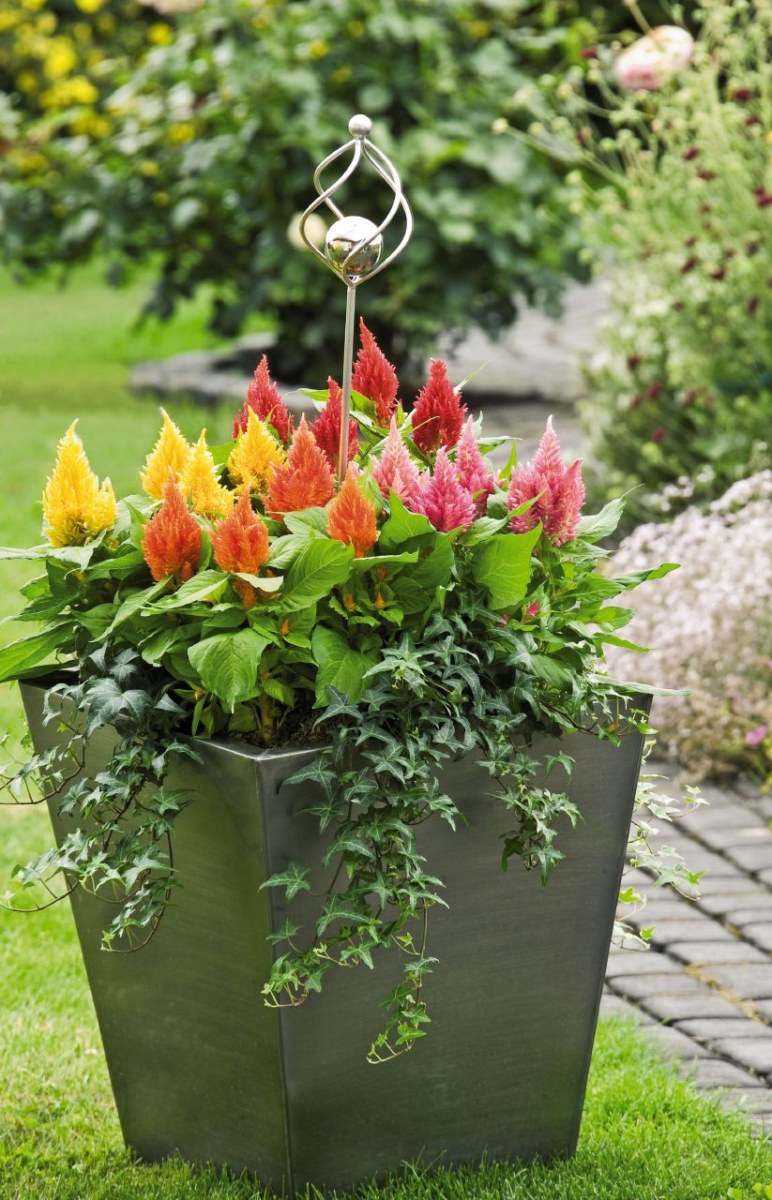
Celosia flower is a herbaceous plant annuals and perennials, sometimes looks like a bush. In a cool climatic environment, only one season can exist, because low temperatures are not for her.

It has a branched system of a straight stem, oblong leaves with a pointed edge.The inflorescences are similar to spikelets, scallops or panicles with different colors: red, purple, yellow, etc. as fruits - many seeds.







